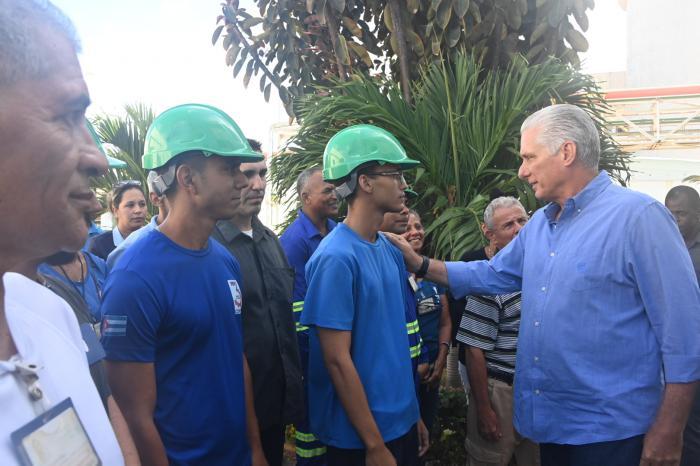In a concerted effort to address Cuba’s ongoing energy crisis, President Miguel Díaz-Canel Bermúdez embarked on a comprehensive tour of the nation’s thermoelectric plants. His visit included the Antonio Maceo plant in Santiago de Cuba and the Lidio Ramón Pérez facility in Holguín, where he engaged with executives and workers to assess the recovery of the National Electric System (SEN). The President’s tour comes at a critical juncture, as the country grapples with prolonged blackouts and significant generation deficits.
At the Renté plant, General Director Jesús Aguilar Hernández provided an update on the facility’s operational status. Despite facing numerous unforeseen outages, the plant is progressing toward stability, particularly with the recent activation of its 70-megawatt (MW) block five following partial maintenance. Units six and three are currently generating 50 MW each, while unit four remains in technical shutdown since 2023. However, a recovery strategy is underway as part of the Government Plan to bolster the SEN. Light maintenance is scheduled for December on units six and three, aiming to enhance the plant’s capacity by year-end.
President Díaz-Canel emphasized the importance of quality maintenance across all units, including corrective work on block five, to ensure sustained energy recovery. He lauded the tireless efforts of Cuba’s electrical workers, describing their work as ‘heroic’ and ‘intensive.’ The President also highlighted the government’s strategy to strengthen the SEN, which includes expanding thermal and distributed generation and advancing the construction of photovoltaic solar parks. Notably, these solar facilities are already generating over 600 MW during daylight hours, with nearly all planned parks either operational or under construction.
During his visit to the Lidio Ramón Pérez plant in Felton, President Díaz-Canel was briefed on the facility’s current output of 200 MW, limited by boiler corrosion. Strategies to address these issues and recover block two, damaged by a fire in 2022, were discussed. The President underscored the plant’s strategic importance to eastern Cuba and reiterated the government’s commitment to improving working conditions for employees, including specialized medical care, wage increases, and enhanced safety measures.
Accompanied by key government officials, President Díaz-Canel’s tour reflects Cuba’s determination to overcome its energy challenges through collective effort and strategic planning.
